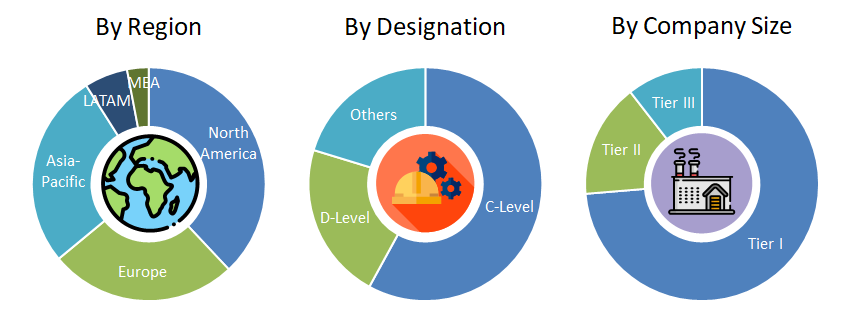| Status : Published | Published On : Sep, 2025 | Report Code : VRAT9648 | Industry : Automotive & Transportation | Available Format :

|
Page : 137 |
Global Flight Simulator Market Size & Share | Growth Forecast Report 2035
Industry Insights By Type (Full Flight, Flight Trainer and Other Simulators), By Application (Commercial Aviation, Military and Civil Aviation), By End User (Airlines, Military and Academic Institutions), By Technology (Traditional Simulators, Virtual Reality and Artificial Intelligence (AI)-Based Simulators) and By Geography (North America, Europe, Asia Pacific, Rest of the World)
Industry Overview
The Global Flight Simulator Market size was valued at USD 7.8 billion in 2025. It is likely to grow up to USD 13.6 billion by 2035 at a CAGR of 7.1 % during the forecast period ranging between 2026 and 2035.

The primary growth driver of the market is the growing use of virtual reality and advanced technology. VR and AI technology are increasing the realism and interactivity of flight simulators. Advanced software is making the training experience even more immersive and practical. A flight simulator is a system that provides a virtual experience of flying an airplane. It is used in pilot training, mission planning, and research. It includes a realistic cockpit, screen display, control system, and motion platform. Virtual Reality (VR), Augmented Reality (AR), and 3D graphics technologies are used in a flight simulator. These technologies make it possible to train in complex situations without flying a real aircraft. They help in improving pilot reaction, decision-making, and emergency handling. Costs are reduced significantly and safety risks are zero.
Flight simulator is used in civil aviation, military, and aerospace companies and it is an excellent learning platform for students and technicians. Weather, technical malfunctions, and other conditions can be accurately modeled by using a flight simulator.
Global Flight Simulator Market Report Coverage
|
Report Metric |
Details |
|
Historical Period |
2020 - 2024 |
|
Base Year Considered |
2025 |
|
Forecast Period |
2026 - 2035 |
|
Market Size in 2025 |
U.S.D. 7.8 Billion |
|
Revenue Forecast in 2035 |
U.S.D. 13.6 Billion |
|
Growth Rate |
7.1% |
|
Segments Covered in the Report |
By Type, By Application, By End User and By Technology |
|
Report Scope |
Market Trends, Drivers, and Restraints; Revenue Estimation and Forecast; Segmentation Analysis; Impact of COVID-19; Companies’ Strategic Developments; Market Share Analysis of Key Players; Company Profiling |
|
Regions Covered in the Report |
North America, Europe, Asia Pacific, Rest of the World |
Global Flight Simulator Industry Dynamics
Global Flight Simulator Market Trends/Growth Drivers:
Need for Safety and Cost Savings in Aircraft Training
The demand for flight simulators is growing rapidly in the aviation sector to promote safety and reduce training costs. Realistic simulations provide pilots with a realistic experience, thereby reducing risk. Training in simulators increases the efficiency of aircraft operations and reduces the chances of accidents. It allows for less fuel consumption and less time than actual flying. Advanced graphics and VR technologies have made flight simulators more effective. Airlines and defense institutions consider it a must in their training programs.
Other trends and growth drivers of the global flight simulator market include the development of drone flight simulation which is bringing new training opportunities. Also, increasing air traffic numbers have increased the need for skilled pilots. Government regulations and aviation safety standards have fueled the demand for flight simulators as well as the expansion of remote and online simulation options. Educational institutions and commercial companies are increasing investments and international collaborations and technological partnerships are also driving market growth.
Global Flight Simulator Market Challenges
High Cost and Complex Technical Requirements
The high cost of developing and maintaining flight simulators is the biggest challenge of the global flight simulator market. Advanced hardware and software are required to make the simulators realistic, which are expensive. Small institutes and training centers hesitate to adopt it due to technical complexities. Constant updates and maintenance are required, which adds additional expenses. Lack of qualified experts for training also affects the growth of the market.Global economic instability and budget cuts also hinder investments.
Global Flight Simulator Market Opportunities
Growing Need for Training in the Air Travel Industry
Increasing air travel safety and efficiency has fueled the demand for flight simulators. Advanced and realistic simulators are being developed for air force and commercial pilot training. Simulators reduce aircraft operating expenses as a cost-efficient training option. New technological developments such as virtual reality (VR) and augmented reality (AR) are increasing opportunities in the global flight simulator market. Unpredictable weather and emergency situations are increasing the need for training. The growing global airline industry and training institutes are driving the market expansion.
Recent developments by the Key Players
Thales has introduced File Activity Monitoring (FAM), a new feature within its CipherTrust Data Security Platform, that is aimed at improving real-time oversight and protection of unstructured data across enterprise environments.
Global Flight Simulator Market Segmentation
VynZ Research provides an analysis of the key trends in each segment of the Flight Simulator Market report, along with forecasts at the regional and country levels from 2026-2035. Our report has categorized the market based on type, application, end user and technology.
Insight by Type
- Full Flight
- Flight Trainer
- Other Simulator
Full flight simulator has the highest growth potential as they offer realistic flight experience and high technology
The global flight simulator market is divided into Full Flight, Flight Trainer and Other Simulators by type. Full flight simulators are growing the fastest as they offer realistic flight experience and high technology. Its use is considered more effective in training and skill development for pilots. High precision controls, visual systems and movement platforms link it to real fight. The demand for full flight simulators is increasing in both airlines and military sectors. Despite their high prices, investments are increasing due to better results and safety reasons.
Insight by Application
- Commercial Aviation
- Military
- Civil Aviation
Major growth in commercial aviation trainingas the need for pilot training is constantly increasing
The global flight simulator market is divided into Commercial Aviation, Military and Civil Aviation on the basis of application. Commercial aviation is witnessing the fastest growth as the need for pilot training is constantly increasing. Increasing air traffic and strict safety standards in aircraft operations have increased the demand for training. The use of simulators in the military is also increasing for drone operations and combat flights There is a growing demand for simulators in civil aviation for private pilots and aero clubs as well.In all these sectors, better use of technology and cost-efficient training are driving the growth.
Insight by End Users
- Airlines
- Military
- Academic Institutions
High demand and investment from airlines make them the leaders
The global flight simulator market is segmented on the basis of end user into Airlines, Military, and Academic Institutions. Airlines are the largest customers, who invest heavily on simulators for safe, effective, and affordable training of pilots.Military forces are increasing the use of advanced simulator technologies for their flight proficiency and mission preparation.Academic institutions are also increasing the demand for simulator training for student pilots.These sectors are driving the market growth due to technological improvements and low operating costs.The simulator market is witnessing a steady growth due to diverse end users.
Insight by Technology
- Traditional Simulators
- Virtual Reality (VR)
- Artificial Intelligence (AI)-Based Simulators
Rise of Virtual Reality and Artificial Intelligence-based Simulators being more accessible and effective
The global flight simulator market is segmented on the basis of technology into Traditional Simulators, Virtual Reality (VR), and Artificial Intelligence (AI)-Based simulators. VR technology is making simulators more accessible and effective. They make training more immersive and realistic, improving the training experience. AI is being used to analyze pilot performance and personalize training. Training quality has improved with the help of high-fidelity graphics, sensors, and human machine interfaces in simulators. These improvements in technology are providing more effective training while reducing costs. The advent of VR and AI is creating new opportunities in the market and demand is increasing rapidly.
Global Flight Simulator Market: Geographic Overview
- North America
- U.S.
- Canada
- Mexico
- Europe
- Germany
- U.K.
- France
- Italy
- Spain
- Russia
- Rest of Europe
- Asia-Pacific (APAC)
- China
- Japan
- India
- South Korea
- Vietnam
- Thailand
- Malaysia
- Rest of Asia-Pacific
- Rest of the World (RoW)
- Brazil
- Saudi Arabia
- South Africa
- U.A.E.
- Other Countries
North America is the largest global flight simulator market for commercial and military aircraft training. Advanced technology and aviation training requirements make it the most influential region.
The demand for pilot training in Asia-Pacificis growing rapidly, especially in India, China and Japan. Airlines expansion and budget airlines are making this region a fast-growing market.
The European countries have an emphasis on aviation safety and training standards. The region shows steady growth due to flight schools and defense contracts.
In the Middle East, new airport infrastructure and growing tourism industry are increasing the demand for pilot training. Military training requirements are also strengthening this region.
Global Flight Simulator Market: Major Players
- CAE Inc.
- FlightSafety International Inc.
- L3Harris Technologies Inc.
- The Boeing Company
- Thales Group
- TRU Simulation + Training Inc.
- Raytheon Technologies Corporation
- Indra Sistemas S.A.
- Aero Simulation Inc.
- HALVESAN

Frequently Asked Questions
Purchase Options
Latest Report
Research Methodology
- Desk Research / Pilot Interviews
- Build Market Size Model
- Research and Analysis
- Final Deliverabvle
Connect With Our Sales Team
- Toll-Free: 1 888 253 3960
- Phone: +91 9960 288 381
- Email: enquiry@vynzresearch.com
Flight Simulator Market
